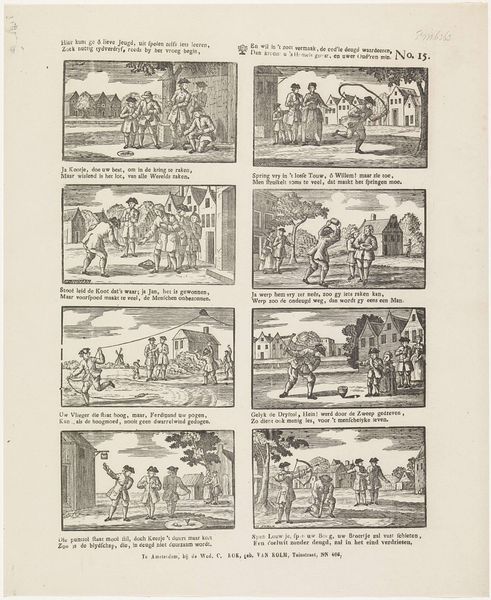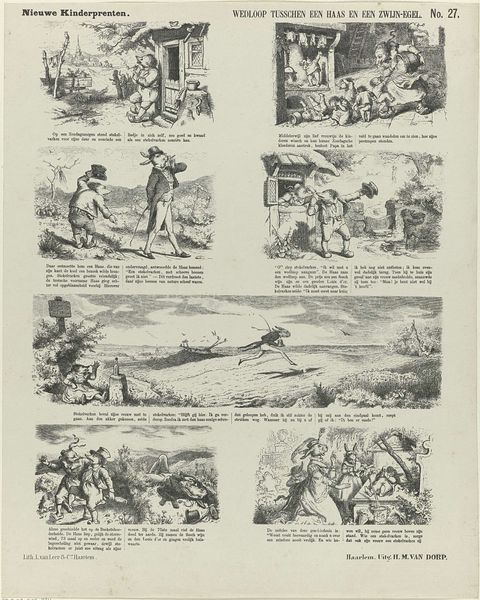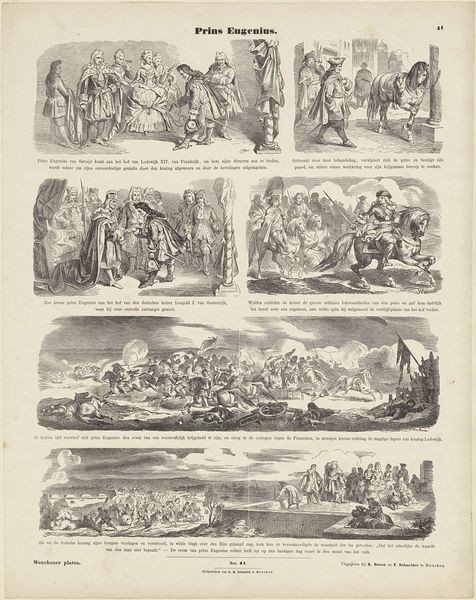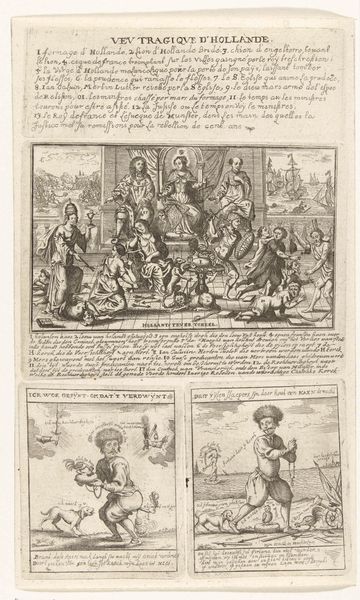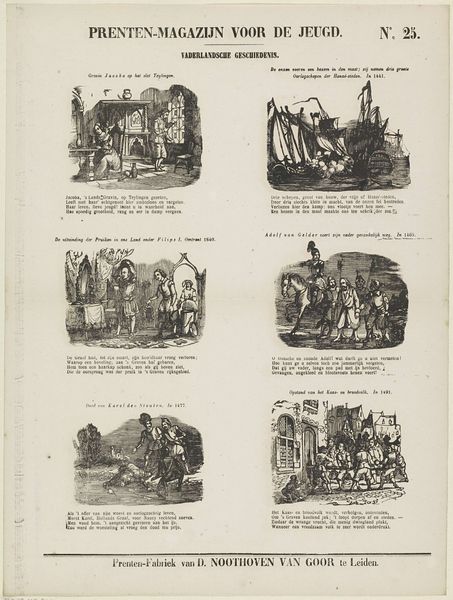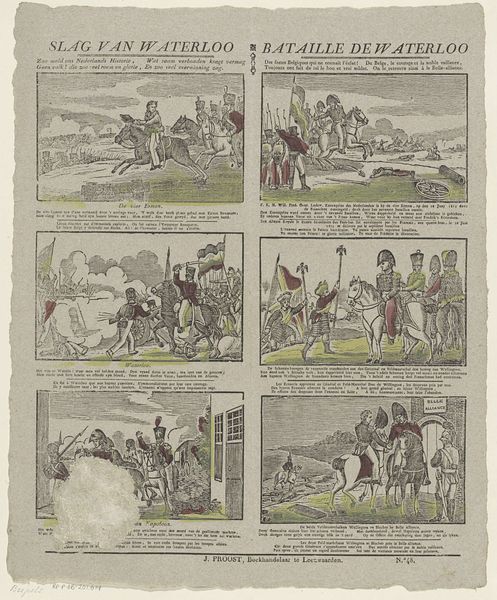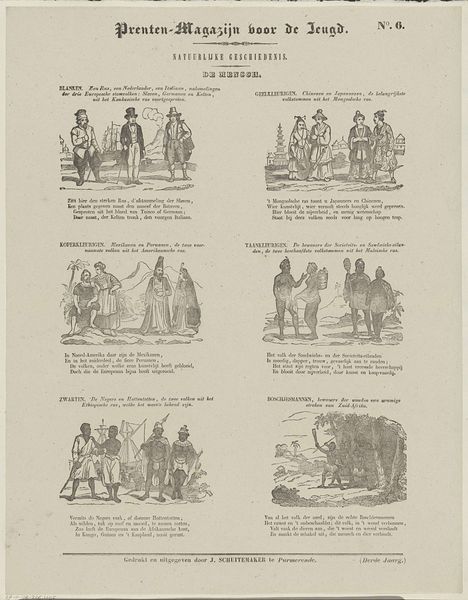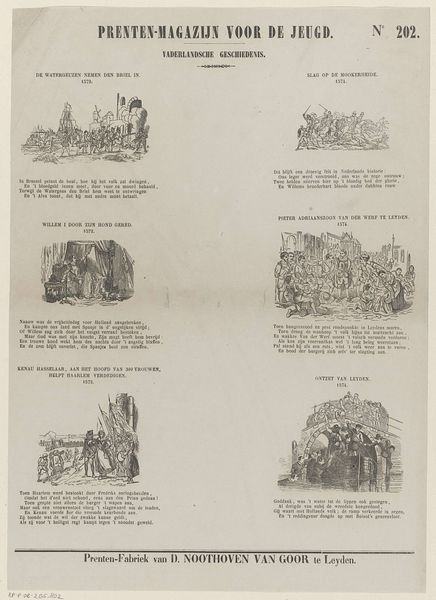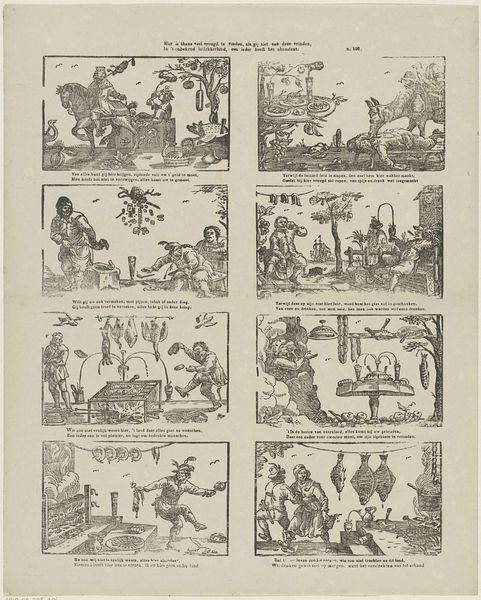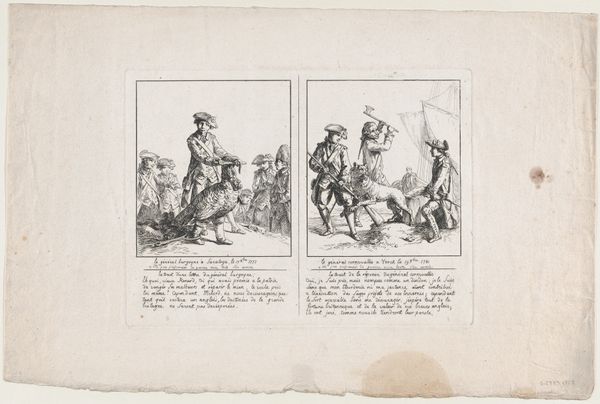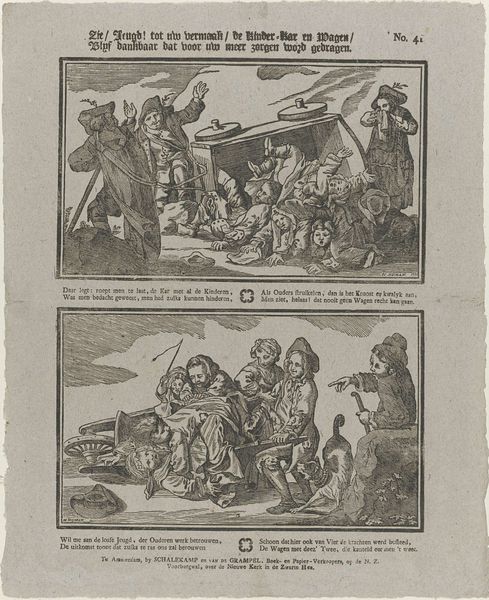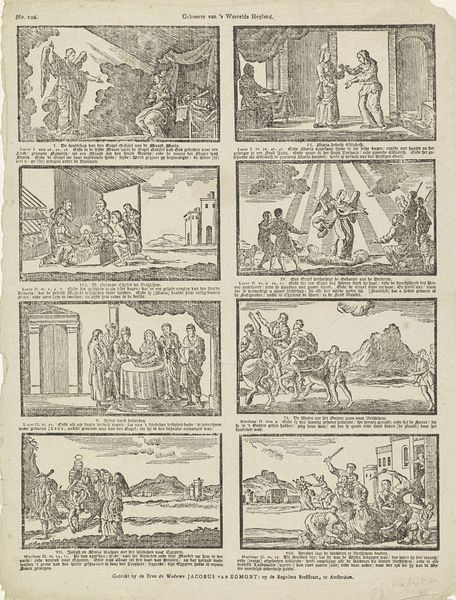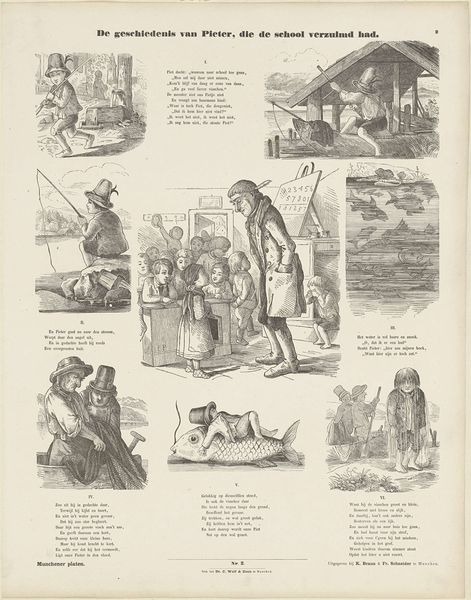
Dimensions: height 417 mm, width 336 mm
Copyright: Rijks Museum: Open Domain
Philippus Jacobus Brepols' print "Slag van Waterloo", made around 1815, captures the famous battle through a series of vignettes. Dominating the scenes are martial figures, horses, and flags, symbols of power, victory, and national identity. Consider the raised flag, a motif stretching back to antiquity. We see it in Roman military standards, medieval banners, and here, in the Napoleonic era. It signifies not just a nation, but a collective will, a shared purpose. This symbol elicits a powerful emotional response: pride, loyalty, and a sense of belonging. It speaks to the depths of our collective memory. Yet, the flag's meaning is never fixed. It can be a rallying point for freedom fighters or a tool of oppression, depending on who wields it. It becomes a vessel for the hopes and fears of entire cultures. It’s this continuous evolution and reinterpretation of symbols that fascinates me—how they resurface, transformed, in the theatre of human history.
Comments
No comments
Be the first to comment and join the conversation on the ultimate creative platform.
